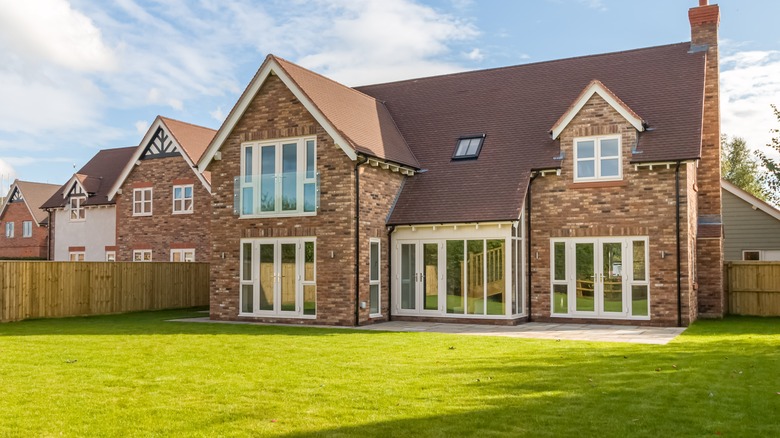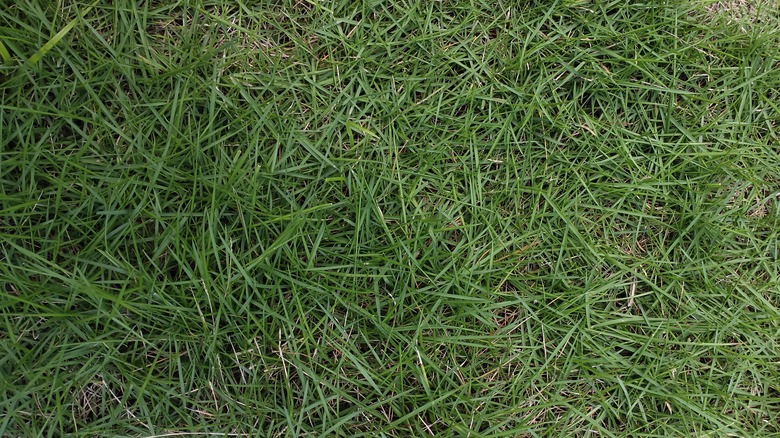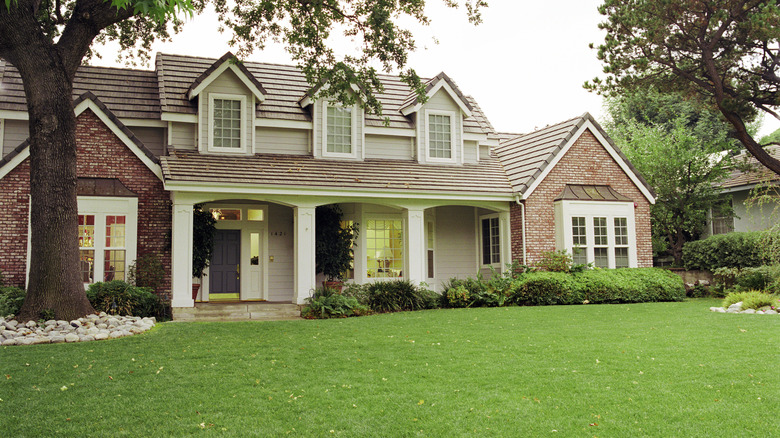Here's Why This Lush Green Grass Is A Bad Choice For Your Lawn
If you've ever admired a particularly beautiful and manicured putting green, you may be wondering if you can get an identical look in your own yard. Unfortunately, that isn't a realistic goal in most of the United States, especially in the South. Bentgrass, the gorgeous, verdant turf that is so popular for golf courses, is extremely labor and resource-intensive to maintain, making it a poor choice for most lawns. Fortunately, there are many other lovely turf grasses that can work well for a lawn.
Native to Europe and Asia, bentgrass (Agrostis spp.) thrives in cool and humid environments. A cool season grass, it is technically hardy in zones 3 through 6 but in spite of those cooler climates, it tends to be a poor choice for yards because it is often outcompeted by weeds and other grasses. Even golf courses with dedicated staff working full-time to help their bentgrass flourish often struggle with keeping it healthy during hot, dry summer months.
Growing and maintaining bentgrass
Bentgrass grows best in full sun and appreciates moist, loamy soils that drain well. Because bentgrass can be quickly harmed by both under and over watering, it is essential to pay close attention to its health and many golf courses use misting systems to provide it with optimal amounts of water and keep it cool. It is also very vulnerable to a variety of diseases, including brown patch and dollar spot, and often requires repeated fungicide treatments.
Homeowners in appropriate climates who truly want a bentgrass lawn, will need to keep on top of mowing it to ensure the distinctive look the grass has on golf courses. While the general recommendation is that the best length to mow your lawn to is between 2 and 4 inches, bentgrass is kept at a height of about 1 inch or less. This gives bentgrass its distinctive look and prevents it from becoming "puffy," but it can also make it even more vulnerable to stress.
Alternatives to bentgrass
While bentgrass is generally an impractical lawn option, Kentucky bluegrass not only looks quite a bit like bentgrass, but is also far easier to grow in much of North America. Hardy in zones 3 through 7, Kentucky bluegrass is one of the best grasses for regions with cooler weather. Additionally, it is more tolerant of part shade than bentgrass, but also thrives in full sun, making it practical to use in multiple areas of your yard.
Homeowners in Southern climates who are growing grasses in extreme heat, should look to warm season classics like bahiagrass (Paspalum notatum) which thrives in zones 8 through 10 and St. Augustine grass (Stenotaphrum secundatum) which is hardy in zones 7 through 12. Both St. Augustine grass and Bahiagrass are able to grow even in relatively dry areas and can often tolerate poor soil in addition to being heat-tolerant. Be aware that bahiagrass is an invasive species in North Carolina, though.


